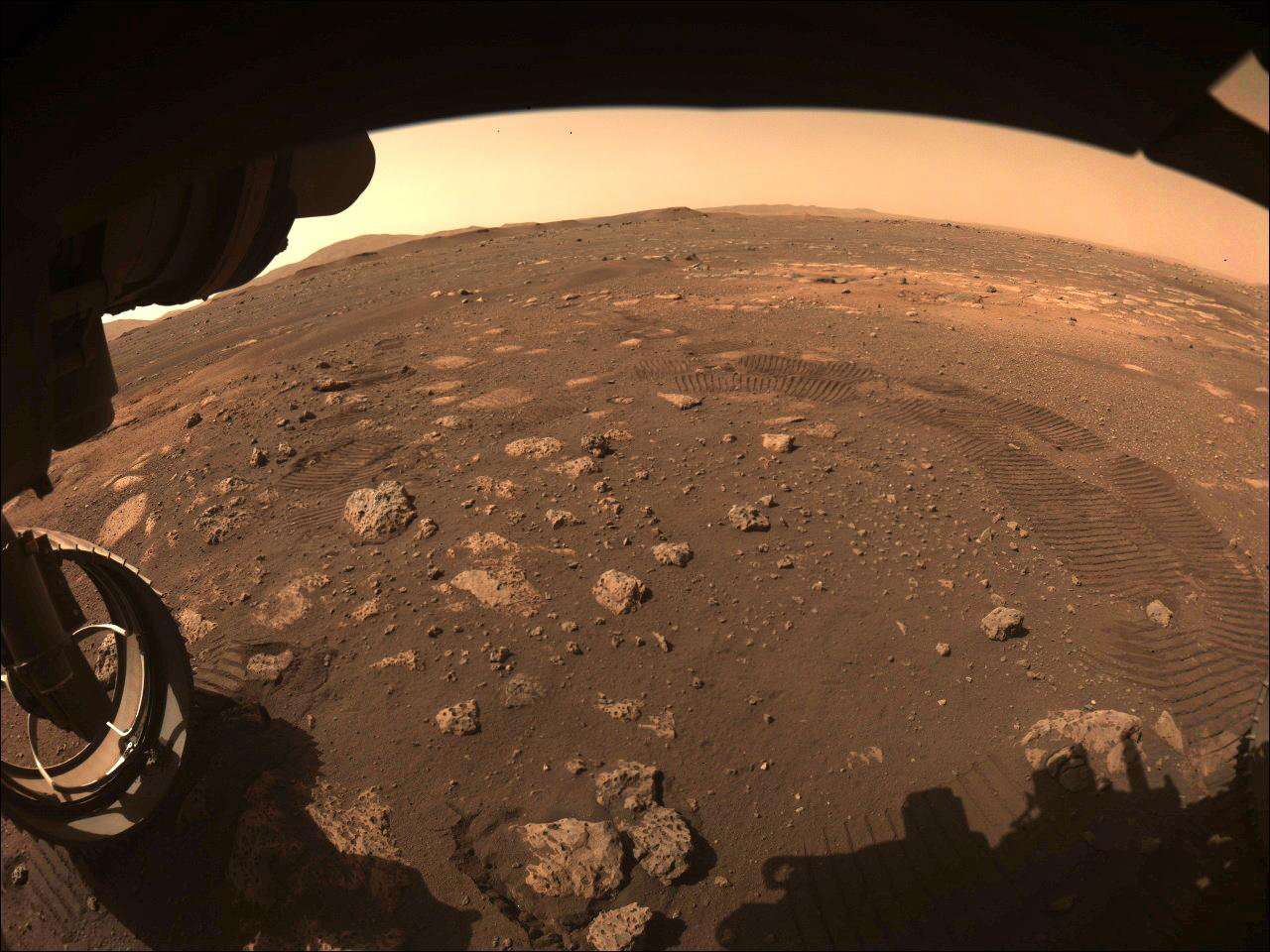Create a free profile to get unlimited access to exclusive videos, sweepstakes, and more!
NASA's Perseverance rover takes first wheeled spin across Martian landscape

Talk about small steps that lead to giant leaps. In a quick driving test that NASA is describing as a “major milestone” for its Mars 2020 Perseverance rover, the freshly-landed craft just made its first tracks on Martian dust, driving a short distance in preparation for the greater journeys to come.
NASA reported today that Perseverance covered a seemingly modest 21.3 feet during its inaugural drive on Thursday, Mar. 4. But that brief jaunt was enough to demonstrate that all its systems are working at full speed, and that Perseverance has what it takes to venture a whole lot farther — and capture a whole lot more imagery — in the months and years to come.
“When it comes to wheeled vehicles on other planets, there are few first-time events that measure up in significance to that of the first drive,” wrote Anais Zarifian, the craft’s mobility test bed engineer at NASA’s Jet Propulsion Laboratory. “This was our first chance to ‘kick the tires’ and take Perseverance out for a spin. The rover’s six-wheel drive responded superbly. We are now confident our drive system is good to go, capable of taking us wherever the science leads us over the next two years.”
Scroll near the 8-minute mark below for a first peek at the Martian ground that Perseverance already is leaving in its wake:
First steps are always tentative, and Perseverance’s first crawl from its original Feb. 18 touchdown position was no exception. It took the rover 33 minutes to traverse its angled, 7-yard course, venturing 13 feet forward before executing an in-place leftward turn of 150 degrees, reversing 8 feet, and coming to a standstill at its “new temporary parking space,” as NASA put it.
With Perseverance cleared for longer trips, NASA definitely has plans for the rover’s current position to be temporary indeed. “Once the rover begins pursuing its science goals, regular commutes extending 656 feet (200 meters) or more are expected,” the agency wrote.
The new vantage point also gave the rover’s sophisticated array of cameras a chance to reflect on the journey so far: “To help better understand the dynamics of a retrorocket landing on the Red Planet, engineers used Perseverance’s Navigation and Hazard Avoidance Cameras to image the spot where Perseverance touched down, dispersing Martian dust with plumes from its engines,” NASA reported.
Leaving the landing site also gave NASA’s mission team the chance to commemorate the historic location by giving it a proper, if informal, name: the "Octavia E. Butler Landing,” named in honor of the late sci-fi author who became the first African-American woman to earn both a Hugo and a Nebula award. Though NASA regards the designation as an unofficial one, it likely won’t be long before it enters heavy rotation as a shorthand verbal marker among mission engineers. “Mars rovers have traditionally given unofficial nicknames to various geological features, which they can use as references in scientific papers,” explains NASA.
With Perseverance passing its first mobility milestone, NASA will prepare for longer excursions by calibrating the craft’s systems, instruments, and software before the rover sets out on its stated mission to discover evidence of life beyond Earth. Collecting Martian rock and regolith for the first time in human history, as well as scanning the planet’s topography, geology, and climate for signs of past and present conditions that could favor microbial life, Perseverance represents a precursor in NASA’s long-term goal of laying a foundation for humanity’s first trip to Mars.


























